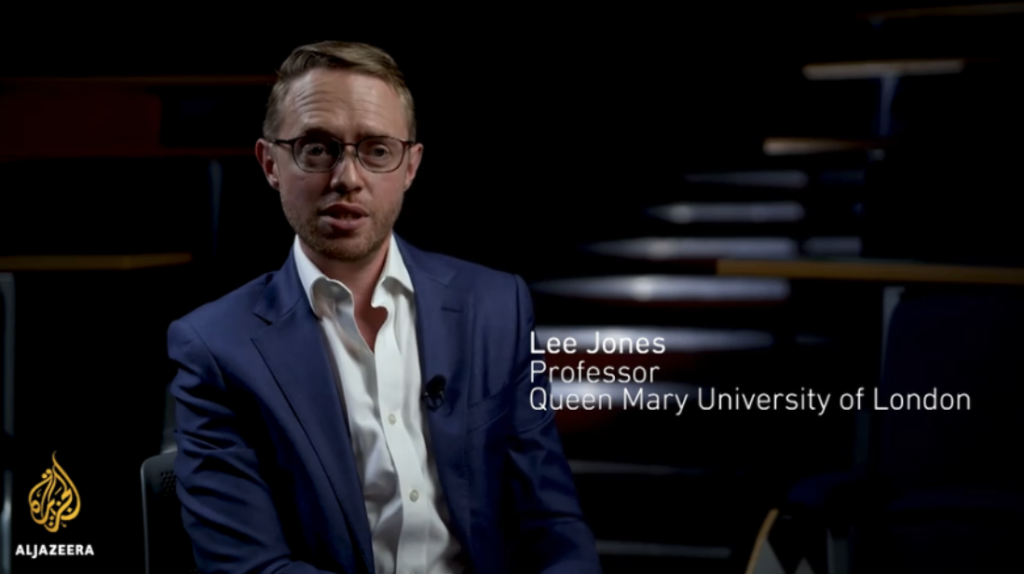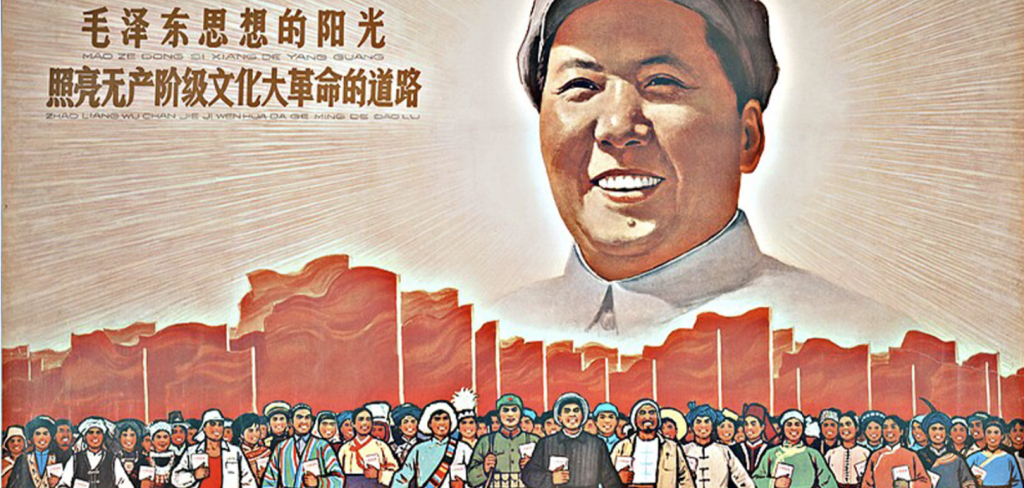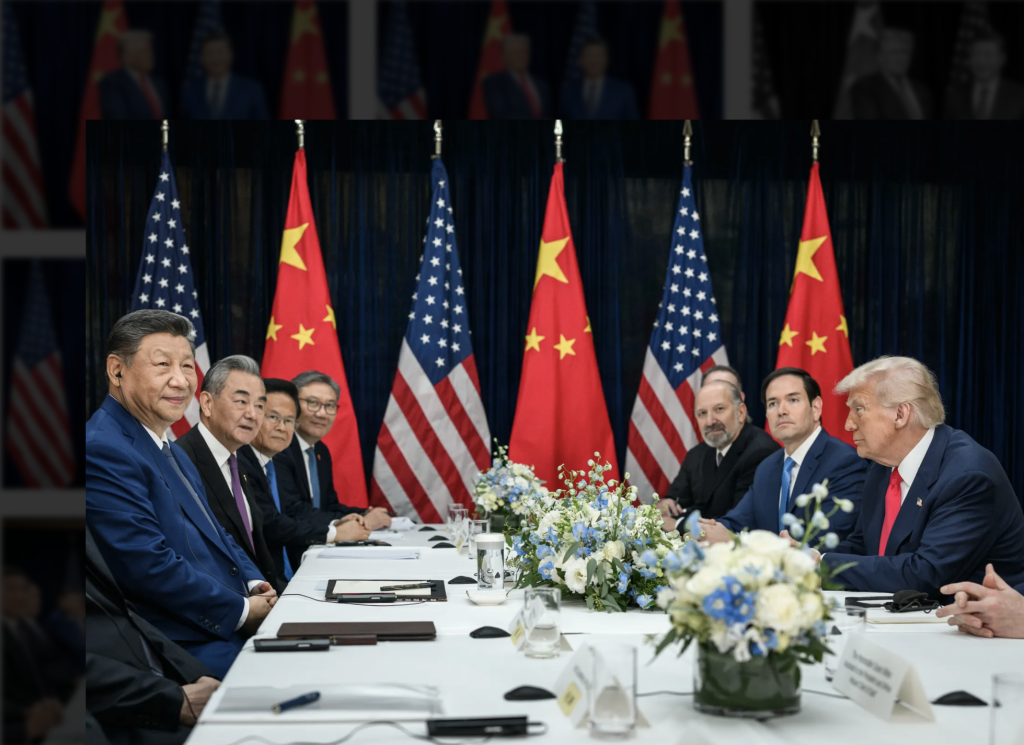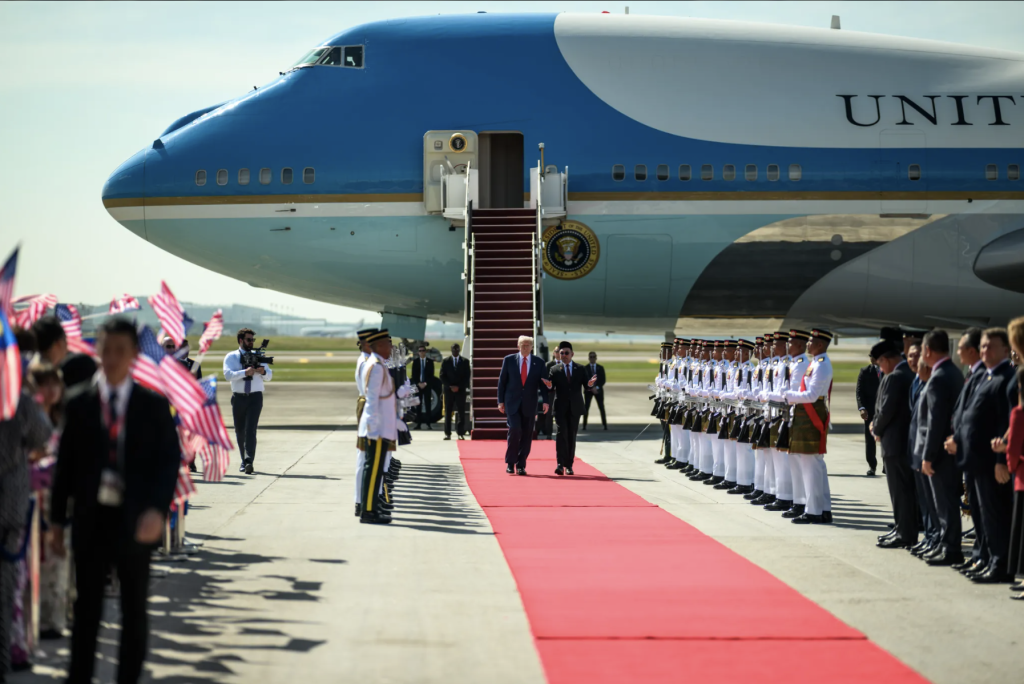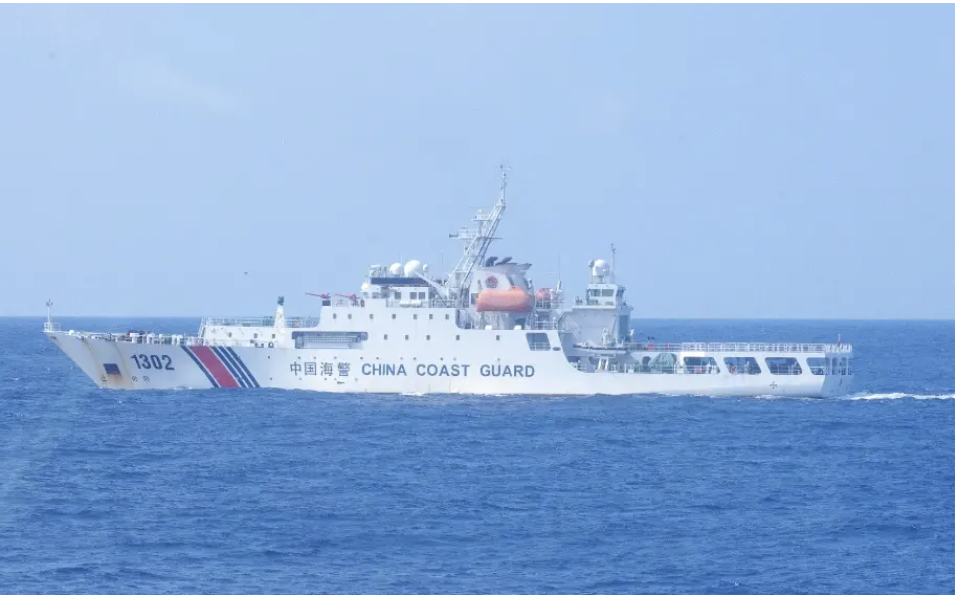The Promise of People-to-People Exchange in Sino-US Relations
Due to a technical error, the byline of this article was incorrect at the time of publication. This article is authored by Jessica C. Teets, an Associate Professor in the Political Science Department at Middlebury College, and Associate Editor of the Journal of Chinese Political Science. Her research focuses on governance and policy diffusion in authoritarian regimes, specifically the role of civil society.
Given the current acrimonious relationship and “decoupling” between the United States and China, are there ways to improve this relationship? If policymakers and business leaders are unable to interact and cooperate in any meaningful sense, could “people-to-people (P2P)”[1] engagement provide this channel? These are the main questions with which I engage in this article. I argue that P2P might be able to secure limited cooperation in a few policy areas, but would be even more valuable as a way to ensure continued information flows as an important ‘on ramp’ to deeper engagement between officials from both countries in the future.
The Promise of P2P
During the historic periods of Sino-US normalization and again after the Tiananmen protests, we observed that when official and economic channels are closed, P2P channels may be used to improve bilateral understanding by exchanging information and building relationships. These P2P interactions serve to keep information flowing between the two countries even in the absence of official channels, helping to avoid dangerous misunderstandings and identifying areas of mutual cooperation. Additionally, as we saw with ‘ping-pong diplomacy’ and ‘acrobat diplomacy,’ these P2P exchanges improve public opinion of the other country such that political opportunities open for official tracks of diplomacy.
In sum, P2P exchanges increase mutual understanding and facilitate trusted relationships, and this builds a strong foundation with which to improve public opinion to create political openings for official diplomacy in the future. Given this promise and the current tense diplomatic relationship between China and the US, many are advocating for more P2P initiatives.
Challenges for P2P
Although P2P initiatives take many forms, I focus specifically on civil society given my research expertise in this area. I have observed many examples of the promise of P2P, specifically how greater civil society engagement improves cooperation and dialogue across borders, like through The Global Fund programs which developed, funded, and linked policymakers and civil society working in the health sector. However, the current time period is more similar to the early 1990s than the early 2000s, with high and persistent levels of distrust prevalent in the relationship. As noted by the Carter Center, “Chinese and American government actions have made cooperation more challenging than in the past, and security pressures have increased risk aversion for participants on both sides.”
In the US, even though the Biden administration has stated that they want more proactive engagement with China, they have not changed the Trump administration’s wariness and competitive strategy. This is expressed by many government officials who argue that in any interactions, including those with Chinese scholars and civil society, we must be careful in assuming that they are independent (meaning, of course, that they should be understood as agents of the state). The China Initiative explicitly expands the types of information exchange and ‘nontraditional’ state agents of concern to include activities and people engaged in P2P exchanges, by developing “an enforcement strategy concerning non-traditional collectors (e.g., researchers in labs, universities and the defense industrial base); educate colleges and universities about potential threats to academic freedom and open discourse from influence efforts on campus; and apply the Foreign Agents Registration Act to unregistered agents seeking to advance China’s political agenda.” Enforcement actions were taken with 12 high-profile cases in 2021 alone. Additionally, declining public approval of China decreases the political opportunities for Congressional representatives and policymakers to advocate for engagement. This is not a politically feasible position currently, and most government officials and scholars who previously advocated for engagement now feel that China is not a “good faith partner,” signaling the end of the era of engagement.
In China, this distrust can easily be seen in the last five-year plan highlighting the danger of “hegemonism” from the United States. For civil society, this distrust manifests in the form of challenges for foreign NGOs to work in China, especially in partnering with or funding Chinese NGOs. These restrictions and the general distrust of Western civil society as a potential ‘Trojan horses’ for regime change casts doubt on any strategy to encourage US NGOs and government agencies to directly fund or influence project choices in that it might unintentionally target domestic NGOs. This context is concerning in that relying on civil society groups in China to help achieve policy goals might create unrealistic expectations, and even more worryingly, place these groups in harm’s way for state monitoring or action. As in the 1990s, civil society engagement offers ways to improve the Sino-US relationship; however, this must be done carefully, with realistic expectations about what civil society can and cannot do, and always with a ‘do no harm’ principle.
Path Forward for P2P
Although the current situation in both countries casts doubt on the ability of non-state actors to significantly impact the bilateral relationship, the lessons from civil society engagement in the aftermath of the Tiananmen protest offer some pragmatic ways forward. In the 1990s, we learned that it is important to do two things: 1) create policy access for civil society, and 2) develop civil society capacity. Below I first outline the ways these two goals were accomplished, and then apply these lessons to the current situation.
1. Create Policy Access
As with the 1995 UN conference for women’s rights hosted by China, and the Global Fund with health projects, we have observed that mandating the participation of civil society in these platforms creates space for the growth of civil society groups, including more of a voice in certain policy areas. The Global Fund projects on HIV/AIDS, for example, created a number of civil society groups who then participated in creating anonymous testing sites as well as education in many hard-to-reach communities in China such as among sex workers, drug users, and its gay population (e.g., the ‘men sleeping with men’ groups). These policy interventions were then further supported through the GF funding and used to develop new Chinese regulations. Without policy access, it is challenging for civil society to have this sort of impact in China. Thus, to increase the impact of P2P initiatives to cooperate on mutual areas of interest, like public health, the US should:
Elevate issues raised domestically by civil society to a bilateral level during talks and meetings without directly identifying the groups
Mandate the participation of civil society in all bilateral or multilateral platforms
2. Develop Civil Society Capacity
Investing in improving the capacity of NGOs is even more important now because directly funding group projects is challenging under the new foreign NGO (FNGO) law. Since the law went into effect in 2017, Jessica Batke finds that 591 international NGOs have registered representative offices, and have filed 3,717 temporary activities. International NGOs still are active in China; however, working with and funding domestic groups is difficult. Currently, government contracts (服务购买) are becoming a larger part of domestic NGO budgets, along with domestic fundraising allowed under the 2016 Charities Law; however, it is challenging for groups to cover salaries and professional development costs with these funds given strict fraud regulations. Often these funds may only cover direct project costs. This is a gap into which foreign funders may step, and improving the technical capacity of these groups means that they are more likely to contract and consult with local governments, creating access points in a closed policymaking structure that often lacks societal information about policy preferences and impact. To improve capacity, USAID and US-based foundations and NGOs should:
Invest in creating strong civil society technical capacity, such as online fundraising, social media and web development, program evaluation, etc.
Share resources with domestic groups, such as policy research, lessons from demonstration sites in other countries similar to China, access to experts, tax policies to allow for donations and philanthropy, etc.
Many local officials cite lack of group capacity for not working with local civil society, followed by a fear that the groups are puppets or trojan horses for Western interests. Increasing civil society access to policymaking by elevating issues, mandating participation in international platforms, investing in capacity, and sharing policy resources will help domestic groups play a more active role in China, and avoid the negative repercussions of close association with foreigners. In the 1990s, these practices helped catalyze a thriving NGO sector now comprised of over 1 million registered groups that participates in policymaking and civic life.
Applying these Lessons to P2P Initiatives
Given the likely persistence of distrust between China and the US, both the ability of Chinese civil society to achieve policy goals and the desirability of overtly partnering with these groups is in question. In order for P2P to fully achieve its promise of improving the Sino-US relationship, obstacles to engagement must be alleviated, including revising China’s Foreign NGO Law, mitigating fears of arbitrary detention, preventing the weaponization of visa policies, educating NGOs on the challenges of cooperation, and countering xenophobia in both countries. Unfortunately, the current Sino-US relationship is being driven by powerful geopolitical concerns as well as domestic politics in both countries. For example, recommendations such as persuading China to revise the Foreign NGO Law is unlikely given persistent domestic concerns that caused the creation of this law in the first place. None of these larger challenges are likely to change in the foreseeable future; however, despite these challenges, I do see a role for civil society collaboration, but one that defers to Chinese NGOs to determine what would help versus what might (unintentionally) hurt. This role is to increase technical capacity, encourage NGO participation in policymaking and civic engagement, and to elevate issues of mutual interest.
As outlined above, this role would focus on allowing for the process of interest aggregation and advocacy, where at the least, NGOs might serve as a voice for their communities and help the US identify areas of potential collaboration, such as regarding climate change and health. Moreover, civil society groups often work in areas where collaboration might be possible but not obvious, such as municipal waste policies, poverty alleviation, and income inequality. For example, certain types of civil society, such as arts organizations, might be a good bridge in that they are not obviously policy-issue driven, which allows complex and otherwise sensitive conversations. This impact has been seen in the past with ‘ping-pong diplomacy’ and during sporting events. The potential of closer collaboration versus competition will likely depend on issue area and group type. As one potential example, given last year’s global climate summit in Glasgow, China and the US share large domestic coal sectors located in poor states/provinces, and policies shared through P2P networks devoted to transitioning coal miners and their communities to other sectors is an important shared challenge. In the US, coal generated 19.3 percent of the country’s power, almost twice as much as the electricity generated by wind and solar, and over 88 percent in coal-producing states like West Virginia and Kentucky. In China, coal generated 57 percent of power with most coal coming from Inner Mongolia, Shanxi and Shaanxi, and attempted reductions of coal use resulting in brownouts. Plans to reduce dependence on coal require significant community revitalization policies, and lessons shared about how different pilots are working would significantly improve human wellbeing and environmental degradation. NGOs and programs like Refresh Appalachia, Reclaim Appalachia, and the Appalachian Bee Collective in West Virginia, and Just Transition Fund and Kentuckians for the Commonwealth in Kentucky, are helping former coal workers and their communities, and NGOs like Society of Entrepreneurs & Ecology (SEE) and China Labour Bulletin are helping the same communities in China. P2P initiatives with these groups and local government officials would improve programs and build trusting relationships.
In addition to identifying and facilitating potential areas for collaboration, P2P initiatives build a strong foundation for mutual understanding and trusting relationships at the citizen level that, over time, may improve public opinion of the other country, and change the political opportunity structure for government officials to begin deeper engagement. In short, I think that P2P engagement with Chinese civil society is a good strategy, but that it must be carefully balanced to avoid or mitigate the distrust in both countries. Expanding these P2P initiatives to a regional or multilateral network might also help avoid obstacles to engagement that bilateral initiatives might face.
[1] P2P denotes any organized “citizen” level interactions intended to increase mutual understanding and build trusting relationships across borders, such as sharing culture like art or theater, exchanging faculty and students, working on projects cooperatively through NGO partnerships, etc. Economic activities are not included in this concept as they are often more transactional and intend to earn profit rather than only increase understanding and good will. Tourism might improve understanding in a superficial way, but the intention is for leisure/pleasure, so only certain categories of tourism would count as P2P, such as organized study tours etc.


